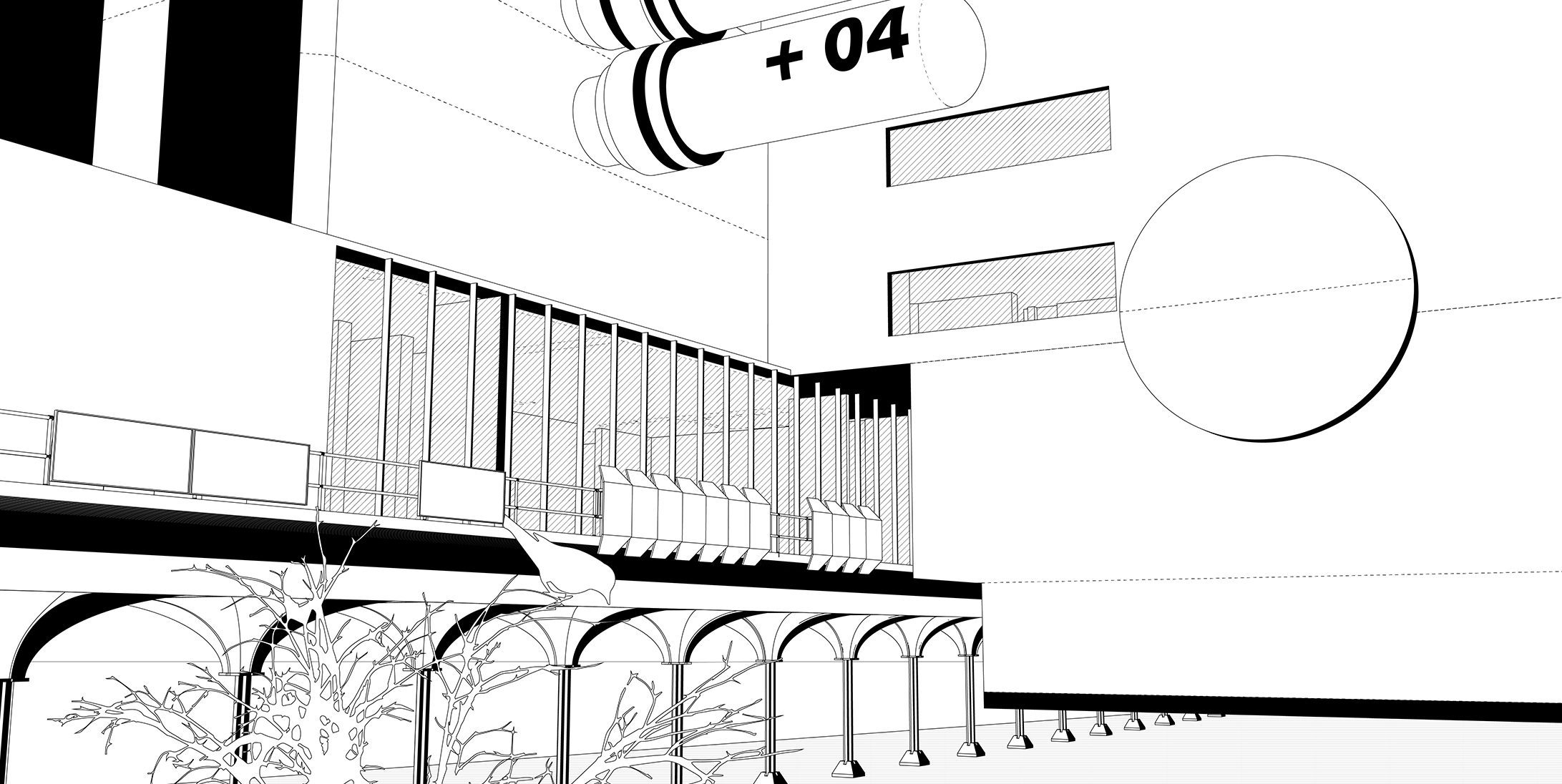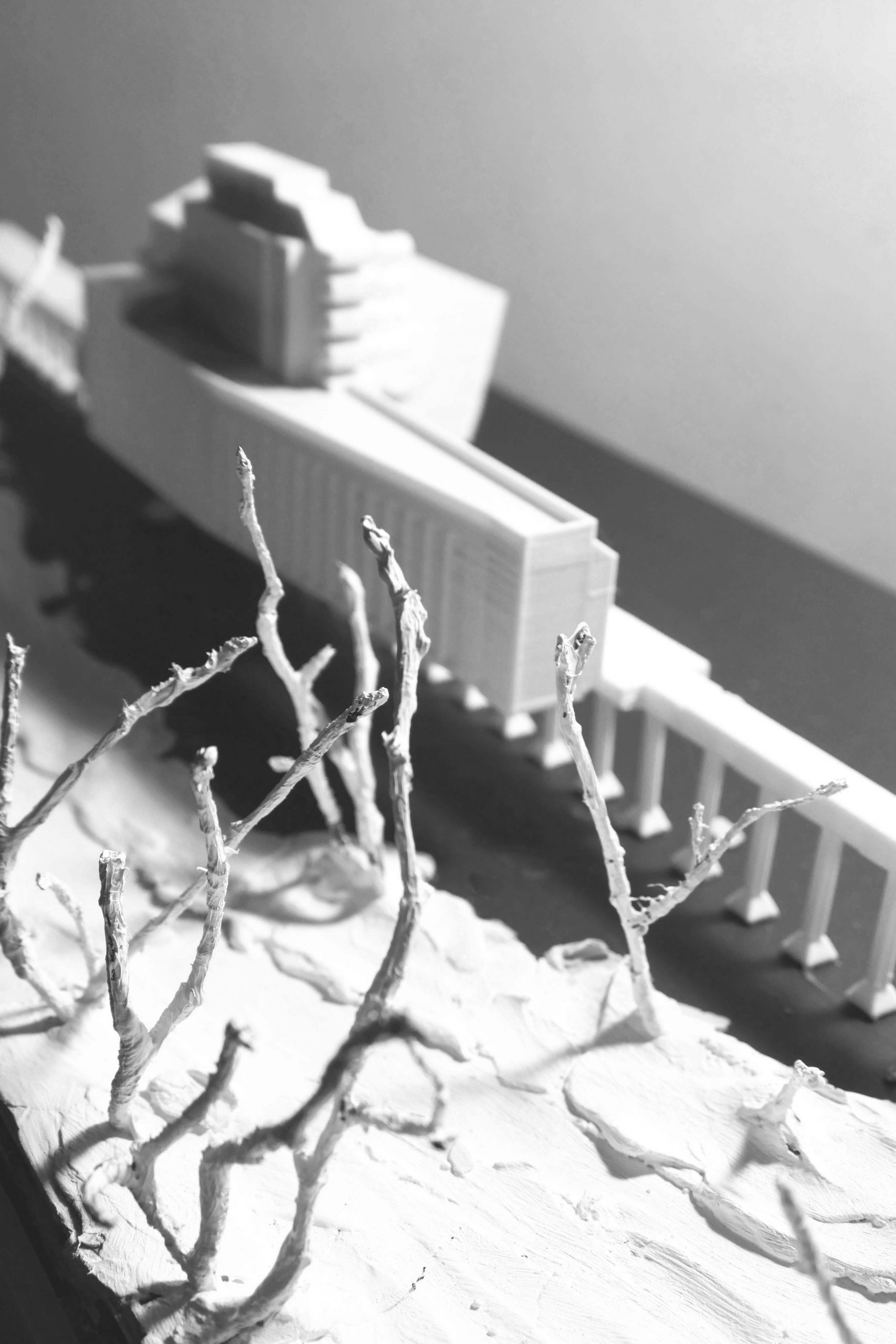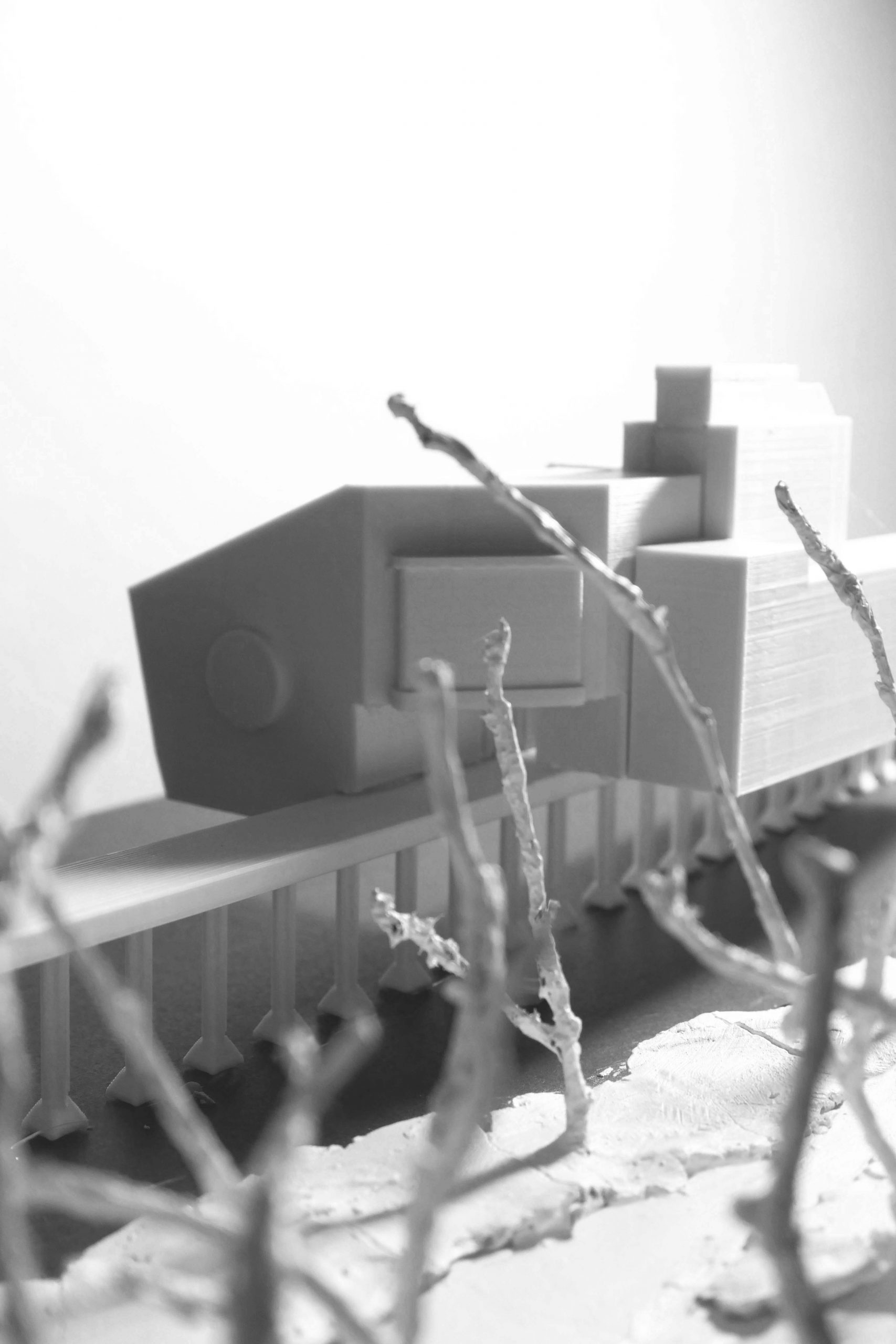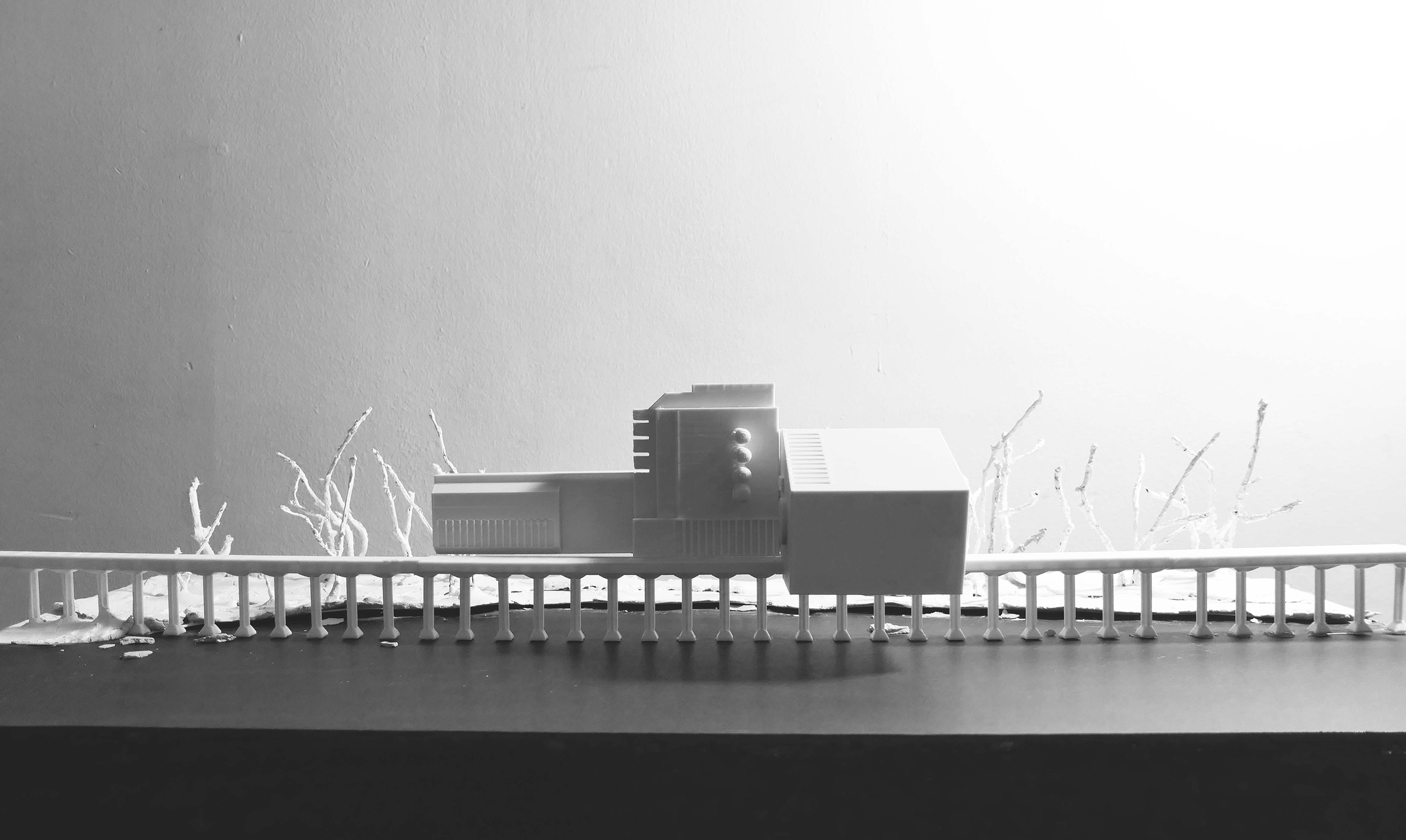
Anthropocene
In the south-eastern tip of the Hawaii islands, a substantial amount of plastic fragments terminates at a place called Kamilo Beach. Kamilo Beach is a zone where marine debris and wastes are accumulated and collected from The Pacific Garbage Patch. From this location, an object called plastiglomerate, a composite material made by a mixture of rock and molten plastic, is discovered (Robertson 2016, par. 4). One can argue that this place is a space where we can reflect on our actions. When we discard something, we refer to the word “throw away,” but Kamilo Beach reminds us that there is no “away” (Case 2019, 79). Instead of hiding our mistakes, the idea of this thesis is to reveal the problem and respond to it.
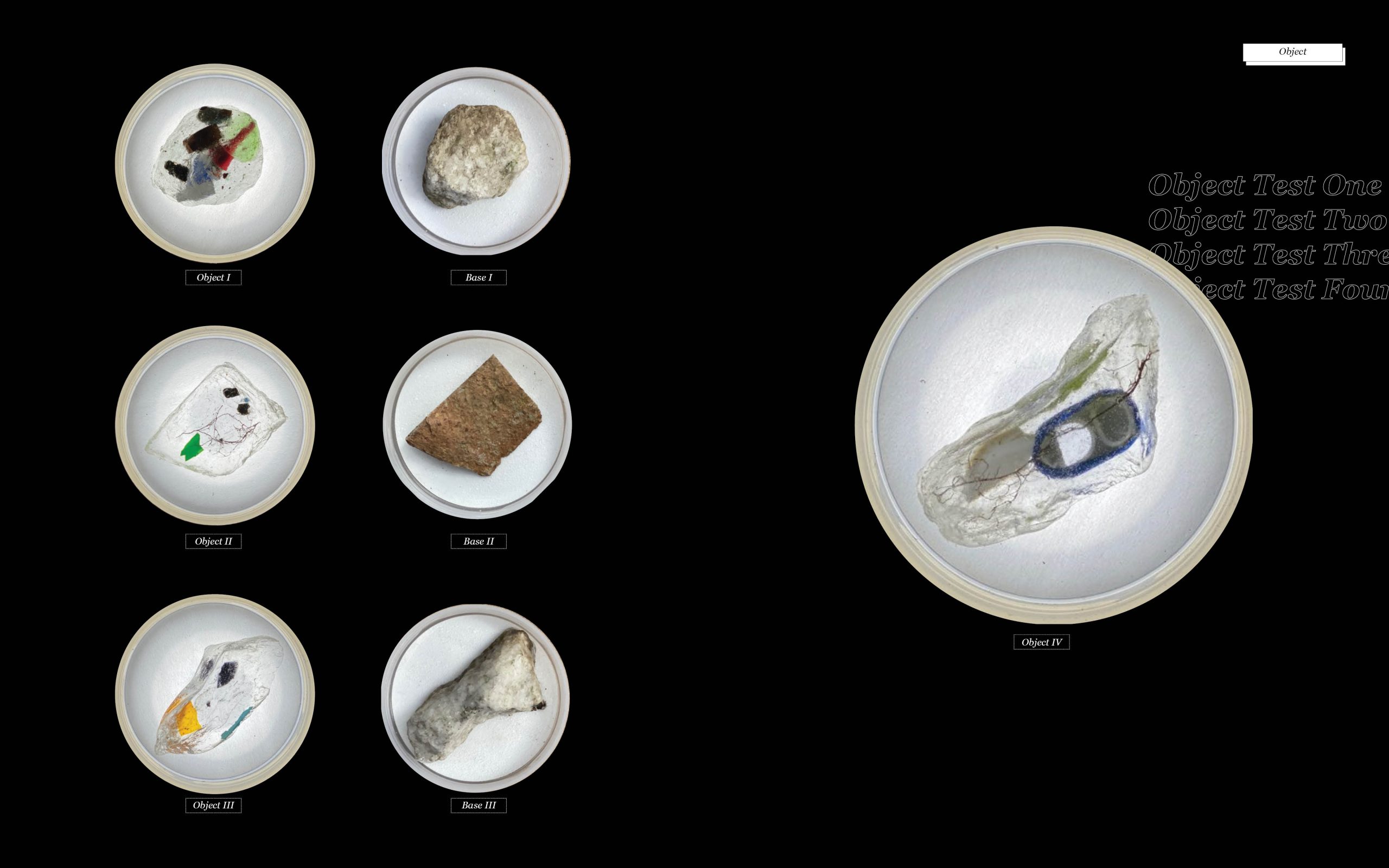
Lakeview Site
The Lakeview Site is selected as the study area. This location has evolved over time since the mid-1900s. “The Four Sisters” once used to play a significant role as it produced approximately 17% of the province’s energy needs. Coals and ashes used to pile up on the eastern side of the site; however, the provincial government confirmed to shut down its service by recognizing the environmental contamination. Finally, the four concrete stacks were removed with the rest of the powerhouse building, and what is left is an artificial shoreline (Ernie 2013, 11-13).
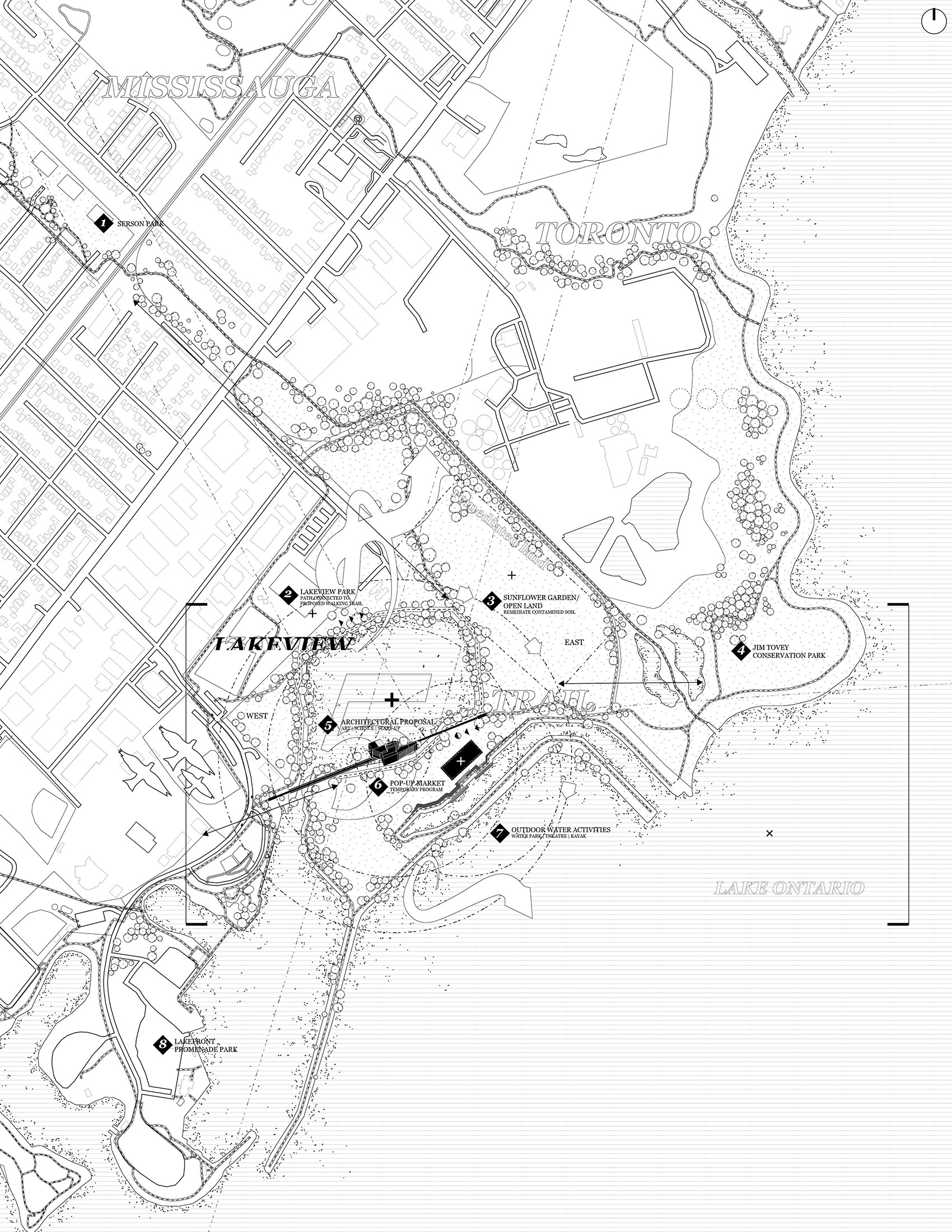
The architectural form roots from is an accumulation of found objects and further reinterpreted into an architectural structure. The surrounding landscape is speculated to offer a space for plants, humans, animals, insects, and aquatic life to coexist together. Where the coal used to be piled is now a field of sunflowers, cleaning the toxins left in the contaminated soil. The conservation area is planned to be developed next to the study area to bring wildlife back to the site. The landscape is imagined to be treated to continue the existing waterfront walking trail and expand the green network.
This proposal imagines a space where ideas can grow and expand, and ultimately serve something back to the city with positive energies. Sometimes we are less conscious of our actions, and this thesis aims to bring up our misbehavior and opening up conversations.

Architectural Thesis Proposal
This thesis focuses on addressing environmental issues by establishing awareness and consciousness through architectural intervention. Three major programs are introduced with a verb to express its character: Present (Art-based program), Explore (Science-based program), and Create (Start-up program). The architecture is speculated to offer a space where individuals and groups of people can start to open their imagination and be involved in the next chapter of the Earth by responding to the environmental crisis. Programs such as theatre, research station, exhibition hall, and testing pods are introduced, where people may have opportunities to engage with materials that they are unfamiliar with.


